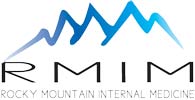Hemorrhoids are simply enlarged veins – much like varicose veins of the lower leg – that may protrude through the anus on straining. Hemorrhoids never turn to cancer, but can cause troublesome symptoms such as bleeding, pain, itching, swelling, and obstruction. Both men and women get hemorrhoids. They affect all ages, but are more common after age 50.
What is Infrared Coagulation for hemorrhoids?
Infrared photo-coagulation (also known as coagulation therapy) is a medical procedure used to treat small and medium-sized hemorrhoids. During the procedure, the doctor uses a device that creates an intense beam of infrared light. The light causes a clot to form in the vein, cutting off the blood supply to the hemorrhoid. The hemorrhoid dies, and a scar forms on the wall of the anal canal. The scar tissue holds nearby veins in place so they don’t bulge into the anal canal.
What preparations are there prior to the procedure?
- Please purchase the following supplies available over-the-counter (no prescription needed):
- 2 bottles Magnesium citrate (plain)
- 6 tablets Dulcolax
- 1 phospho soda Fleet’s enema (green & white box)
- Follow a clear liquid diet 36 hours before the procedure. Drink at least 3-4 quarts of liquid a day. Start the diet after lunch 2 days before your appointment.
- Drink 10oz. of Magnesium Citrate (preferably chilled over ice) at 2:00pm each day starting two days before you appointment.
- Take 3 Dulcolax tablets at bedtime each night starting two days before your appointment.
- Use a Fleet Enema (green & white box) on the morning of the examination about 1 hour before you leave your house.
- Nothing to eat or drink 3 hours prior to your procedure.
What preparations are there for the procedure?
- If you are taking iron or aspirin tablets, please stop them 7 days before the procedure. Tell your doctor if you are on other blood thinning drugs.
- Do not eat any solid food the day before the procedure. Drink only clear liquids. you may have plain Jello (no red), strained juices, soft drinks, clear broth, coffee or tea (no milk or cream added).
- Do not eat corn, beans, or greens three days before the procedure.
- On the morning before the test, mix either Golytely or Colyte to the fill-line with water and place in your refrigerator to chill.
- Begin drinking the mixture between 3:00 – 5:00pm, drinking 1 glass every 15 minutes until all is taken (entire gallon). This must be finished in 3 to 4 hours.
- Do not take anything by mouth after midnight. If you take medication for high blood pressure, heart or lungs, take it at 6:00am with a sip of water.
What should I do after the procedure?
- Call your doctor if you begin running a fever or notice redness or swelling around the rectum anytime after the procedure. Also call if you are unable to urinate.
- Take a Sitz Baths (just soaking in a tub) for 20-30 minutes, 3-4 times a day for the next 2 or 3 days, if needed.
- You may apply Hemorrhoidal Cream, or Anusol Ointment to the rectal areas between baths as needed for dryness or local irritation.
- After you have a bowel movement, clean with a moistened tissue or with a Tucks Pad. You may find baby wipes without alcohol cheaper and just as good. Blot dry.
- Follow a high fiber diet (bran, fresh fruit and vegetables). Continue this habit forever, and make sure to drink lots of fluids.
- Until your rectal area is completely healed, use a stool bulking agent daily to keep your bowel movements very soft.
Examples include: Metamucil, PerDiem Plain, Fibermed, Naturacil, Konsyl, Colace (100mg capsules), or Surfak (240mg capsules). - You may have some swelling and weeping of the tissues that have been treated. You can use a mini sanitary pad to absorb the drainage.
- Note that slight blood tinged drainage is normal. You may actually have some bleeding for up to 14 days after your procedure. Unless this is severe, there should really be no worry. Give a call if you are concerned. Many times there won’t be any bleeding until the scab drops off between 10-14 days after the treatment. Do not be concerned unless you are passing clots.
- The swollen tissue on the inside can often give a false sensation to move the bowels. Avoid prolonged straining and do not take enemas for at least 10 days after the procedure. The enema tube could damage the tissue and cause further bleeding.
- Use extra strength Tylenol or three (3) ibuprofen (200mg) every 6 hours as needed for pain.
- Please make a follow-up appointment for approximately 3-4 weeks from the day the procedure was performed.
